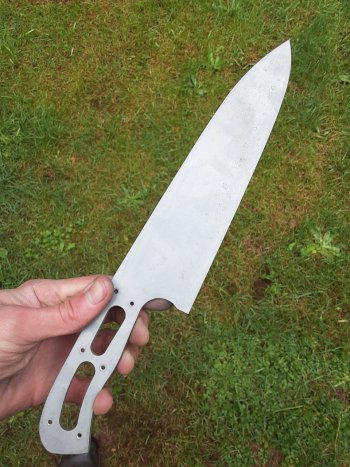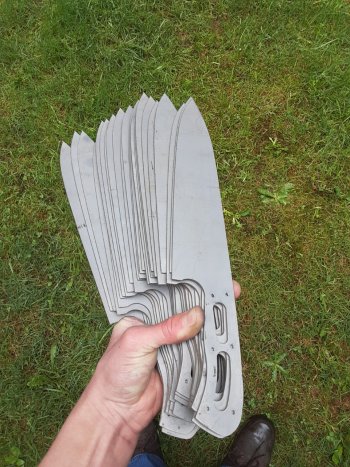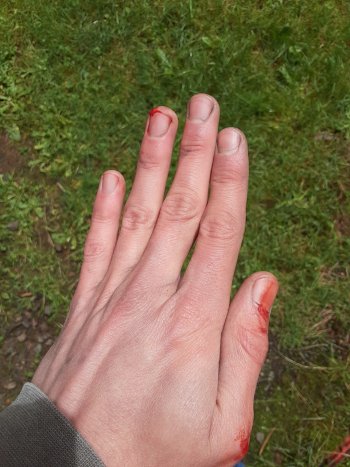Alden Cole
Well-Known Member
I'm about to do a run of a lot (for me) of 8in chef knives (maybe 50) this summer before I head out of state to college. I'm thinking about using NJ steel barons water jet service. I'm not familiar enough with CAD to send them a dxf file, so am planning on sending them a sketch and pattern. Anything I should know before sending the pattern, getting the steel cut? I'm thinking of having all the pin holes spotted (do they do that?) and a weight relief/epoxy slot cut out in the tangs.
Also, I may be getting the cart in front of the horse, but am wanting to think this through before I start. I've been making covers from cardboard and wrapping them in painters tape. I want something nicer than that for these knives. I know John Wilson makes kydex covers for his kitchen knives and like that idea. Does the kydex scratch the blades? I would think that would hurt more on a high polish chef knife than a "tactical knife". Has anyone used those plastic or cardboard sleeves or zippered cases? I like the idea of the zippered cases, they and the kydex covers seem classier than the sleeves. Thoughts? Thanks,
Alden
Also, I may be getting the cart in front of the horse, but am wanting to think this through before I start. I've been making covers from cardboard and wrapping them in painters tape. I want something nicer than that for these knives. I know John Wilson makes kydex covers for his kitchen knives and like that idea. Does the kydex scratch the blades? I would think that would hurt more on a high polish chef knife than a "tactical knife". Has anyone used those plastic or cardboard sleeves or zippered cases? I like the idea of the zippered cases, they and the kydex covers seem classier than the sleeves. Thoughts? Thanks,
Alden
Last edited:




